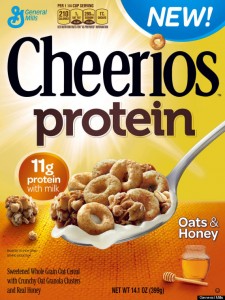 I have a daughter who is vegan and a son who is involved in all kinds of afternoon sports and I’m concerned that they might not be getting enough protein in their diets. I see all sorts of products on the grocery shelves with labels that say “added protein” or list the amount of protein on the front of the package; do I need to buy those products to make sure my kids are getting the protein they need?
I have a daughter who is vegan and a son who is involved in all kinds of afternoon sports and I’m concerned that they might not be getting enough protein in their diets. I see all sorts of products on the grocery shelves with labels that say “added protein” or list the amount of protein on the front of the package; do I need to buy those products to make sure my kids are getting the protein they need?
The short answer is: No, you don’t need to buy protein enhanced products to ensure adequate protein in your children’s (or an adult’s) daily diet. Whether one is vegan or omnivore, nature provides ample whole foods that are protein-rich sources. Even the typical American diet provides plenty of protein, most likely more than the RDA recommendation.
Proteins are made up of building blocks called amino acids. In the same way letters in the alphabet comprise various words, just 22 different amino acids are assembled, torn apart, and reassembled as needed, to make up the tens of thousands of different proteins humans require.
Of these 22 amino acids, we can create (synthesize) 13, from non protein nutrients found in our bodies. However, the remaining nine we must obtain from our food. For this reason alone, these nine are called the essential amino acids (EAAs). Animal foods – meat, eggs, fish and milk – contain all nine EAAs, consequently they are also referred to as foods of “high biological value.” Most middle aged Americans today grew up associating healthy, strong muscles with eating milk, eggs and meat. We go to animal foods first when we think of “protein rich” foods.
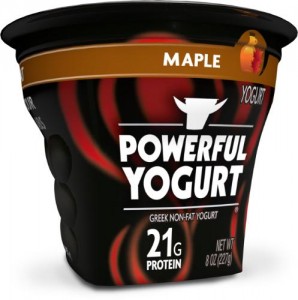 But what does nature offer for your vegan daughter, who doesn’t have eggs or dairy as an option? The truth is, protein is contained in almost all foods. In the vegetable kingdom we receive ample protein from a varied diet that includes protein rich legumes (peas, lentils and beans), nuts, seeds and whole grains. Even salad leaves are 20% protein! (The only natural food-group which generally doesn’t offer sufficient protein per calorie is fruit.
But what does nature offer for your vegan daughter, who doesn’t have eggs or dairy as an option? The truth is, protein is contained in almost all foods. In the vegetable kingdom we receive ample protein from a varied diet that includes protein rich legumes (peas, lentils and beans), nuts, seeds and whole grains. Even salad leaves are 20% protein! (The only natural food-group which generally doesn’t offer sufficient protein per calorie is fruit.
While most single plant kingdom foods don’t contain all nine EAAs as animal foods do, ethnic vegetarian and vegan cuisines have naturally paired these food combinations together for centuries, as in rice and beans or other combinations of legumes and grain. A few plant foods are even complete proteins in and of themselves, like the ancient grain quinoa and sea vegetables. The important point here is that you needn’t worry or be scientific in your approach. A varied diet of good quality whole foods throughout the day is most essential. They don’t have to be eaten together within one meal.
So how much protein is enough?
Way less than you may think.
Recommended Dietary Allowances (RDA) for protein are based on body weight and include age-related adjustments for the extra protein needed for growth. In general, it’s recommended that 10%-35% of your daily calories come from protein. For adults, this translates into a mere 46 grams of protein for women, and 56 grams of protein for men. What does this look like in terms of actual food?
Here are examples of amounts of protein in food:
- 4 oz fish – 23 grams
- 1 cup of milk – 8 grams of protein
- 1 cup whole milk yogurt – 8 grams
- 1 cup tempeh – 32 grams
- 1 cup cooked lentils – 20 grams
- 1 cup cooked beans (all types) – 14 grams
- 1 cup cooked Quinoa – 10 grams
- 1 cup cooked brown rice – 8 grams
- 2 Tbsp peanut butter – 8 grams
- 1 cup cooked chickpeas – 7 grams
- 3 Tbsp sunflower seeds – 7 grams
- 30 almonds – 7 grams (1.25 oz)
- 1 egg – 6 grams
- 1 cup broccoli – 3 grams (even vegetables contain protein)
Below are the Recommended Dietary Allowances (RDA) for different age groups and genders.
|
Protein: Recommended Dietary Allowance
|
|
| Grams needed daily | |
| Children, 1-3 years |
13
|
| Children, 4-8 years |
19
|
| Children, 9-13 years |
34
|
| Girls, 14-18 years |
46
|
| Boys, 14-18 years |
52
|
| Women, 19-70+ years |
46
|
| Men, 19-70+ years |
56
|
As you can see, with a little planning and variety, your vegan daughter can easily obtain her necessary amount of protein. Actually, everyone’s only real concern of getting too little protein is when you are eating too few calories to support your weight and eating too much factory-made foods which have little protein (although lots of calories).
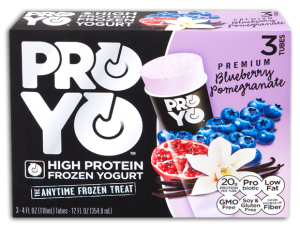 Exercise and sufficient protein
Exercise and sufficient protein
The more one exercises, the more calories are burned off. But generally speaking, this causes one to eat more to maintain their weight, and as long as the additional calories are from REAL foods, the more you eat, the more protein you’ll get. Everything remains in balance because nature is smart!
For those desiring a more quantifiable answer: If you’re a serious athlete involved in endurance training, your protein needs may go up 50%, while those involved in rigorous weight training, may have their protein needs doubled. But please keep in mind that most people think they are exercising much harder than they actually are. Percentage wise, there aren’t a whole lot of us exercising so much that our little extra food replacing our spent calories won’t also fulfill our additional protein needs.
Protein enriched foods – hype or essential?
The new buzzword on the market is protein. The pendulum has swung towards protein because empty carbs are vilified for the junk they really are. Sugar (rather than healthy fat) is the culprit, in both liquid and solid form. Those seeking to lose weight are dumping the carbs for protein; it satiates longer and doesn’t spike blood sugar.
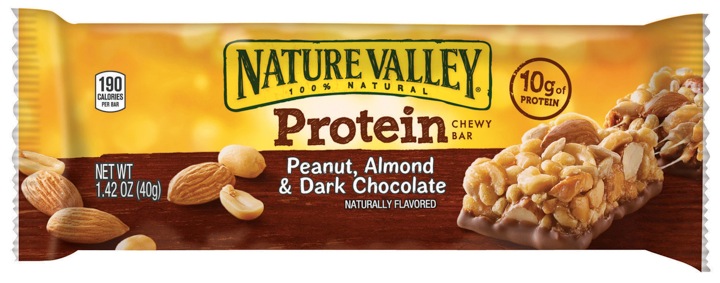 So all the new protein drinks, protein-rich whey added to breads, and protein bars lining our store shelves, are yet another marketing ploy appealing to our fears, and perhaps compensating for the plethora of protein-devoid junk foods that have made- up too large a portion of our diets, for too long.
So all the new protein drinks, protein-rich whey added to breads, and protein bars lining our store shelves, are yet another marketing ploy appealing to our fears, and perhaps compensating for the plethora of protein-devoid junk foods that have made- up too large a portion of our diets, for too long.
No, you do not need to buy them to ensure you or your children are eating enough protein. I always have, and always will – advocate REAL food… for life.
About Ina Denburg
 Ina is a Lifestyle Coach and Wellness Educator who has lived and worked on the path of health and wellness for 30 years. She is passionate about wellness, her practice continuumLiving, is devoted to helping others discover, define and live it for themselves – at home, at work, and in school.
Ina is a Lifestyle Coach and Wellness Educator who has lived and worked on the path of health and wellness for 30 years. She is passionate about wellness, her practice continuumLiving, is devoted to helping others discover, define and live it for themselves – at home, at work, and in school.
GMO-Free Kitchen – a service Ina provides for individuals or groups. All consumer aspects from understanding to eliminating GMO foods, from cleaning them out of your pantry to shopping and replacing with upgraded food items, to learning how to cook delicious GMO-free meals.
Read more about Ina’s background and experience here.

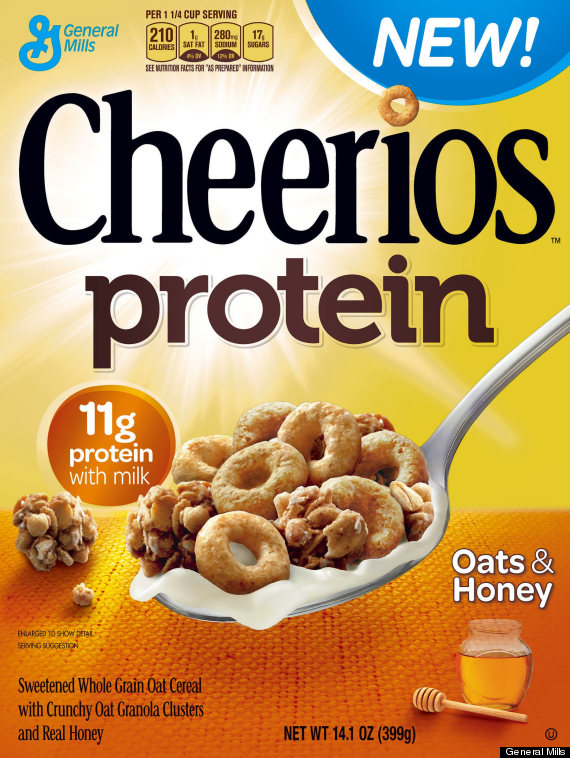
Ina is an extraordinarily intelligent and highly virtuous practitioner who has devoted her life to making a difference in the lives of all she comes into contact with. Both her and her husband have devoted their lives to making a difference that is so positive that I am honored to get their newsletters and books. Wonderful people!
Thanks so much for this concise explanation of protein and why we don’t need to eat animals to get it! I didn’t pick up on it the first time I read the article, but I’m glad you mentioned that pairing foods within a single meal is not necessary, either. As you said, nature is smart (just like the people who eat foods the way nature intended).